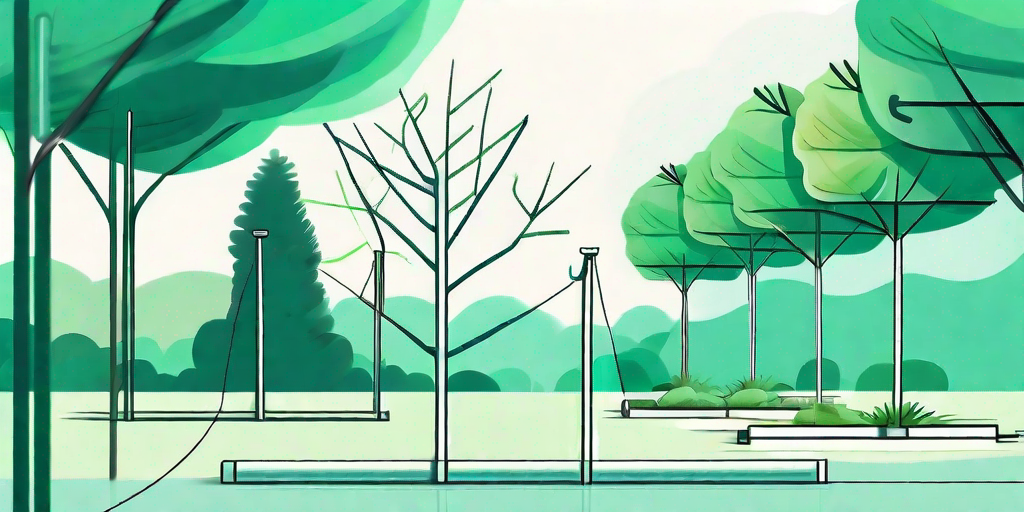
Welcome, green-thumbed friends and tree enthusiasts! If you're here, you're probably looking for some guidance on tree staking. Well, you're in luck! We're about to embark on a journey into the wild world of tree staking, where the stakes are high (pun intended), but the rewards are even higher. So, let's get rooted!
Why Stake a Tree?
Now, you might be wondering, "Why on Earth would I want to stake a tree?" Well, my dear reader, tree staking is not just about making your tree stand tall and proud (although that's a nice bonus). It's about giving your tree the support it needs during its early years to grow strong and healthy.
Think of tree staking as the training wheels for your tree. Just as a child needs training wheels to learn how to ride a bike, a young tree needs stakes to learn how to stand on its own. It's all about nurturing and support, folks!
When to Stake a Tree
So, when is the right time to stake a tree? Well, not all trees need staking. If your tree is standing tall and firm, it probably doesn't need any help. But if your tree is a bit wobbly or if it's been planted in a windy area, then it's time to bring out the stakes.
Also, remember that staking is usually a temporary measure. Once your tree has established its roots and can stand on its own, it's time to remove the stakes. Over-staking can actually weaken the tree by making it dependent on the stakes. So, don't be an overprotective tree parent!
How to Stake a Tree
Materials Needed
Before we dive into the process, let's gather our tools. Here's what you'll need:
- A young tree (obviously!)
- Two or three stakes
- Soft tree ties or straps
- A hammer
Got everything? Great! Let's get down to business.
Staking Process
First, position your stakes. If you're using two stakes, place them on opposite sides of the tree. If you're using three, arrange them in a triangle around the tree. The stakes should be about a foot away from the trunk.
Next, hammer the stakes into the ground. Make sure they're firm and secure. We don't want any wobbly stakes!
Now, it's time to tie the tree to the stakes. Use soft tree ties or straps to avoid damaging the bark. The ties should be snug, but not too tight. Remember, we're supporting the tree, not strangling it!
And voila! You've staked your tree. Give yourself a pat on the back, you tree-staking champion!
Common Mistakes to Avoid
Tree staking is not rocket science, but there are a few common mistakes that can trip up even the most seasoned tree stakers. Here are some to watch out for:
- Over-staking: As mentioned earlier, over-staking can weaken the tree. So, remove the stakes once the tree can stand on its own.
- Using the wrong materials: Avoid using wire or rope to tie the tree to the stakes. These can damage the bark and harm the tree.
- Staking too high: The ties should be about a third of the way up the tree. Staking too high can cause the tree to bend and sway.
Remember, the goal is to support the tree, not to constrain it. So, stake with care!
FAQs
How long should I leave the stakes in?
Typically, stakes should be left in for one to two growing seasons. But this can vary depending on the tree and the conditions. When in doubt, consult with a local arborist or your friendly neighborhood tree expert.
Can I stake a mature tree?
Generally, mature trees don't need staking. But if a mature tree has been uprooted or is leaning dangerously, staking can help stabilize it. Again, when in doubt, seek professional advice.
What type of stakes should I use?
Wooden stakes are commonly used, but metal stakes can also be used for larger trees. The key is to use sturdy, durable stakes that can support the tree without causing damage.
Conclusion
And there you have it, folks! A comprehensive guide to tree staking. Remember, tree staking is all about support and nurturing. So, stake with care, and watch your trees grow tall and strong. Happy staking!















